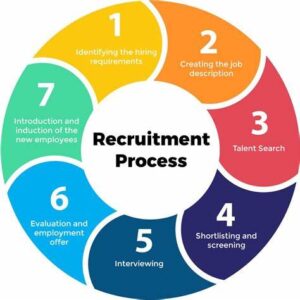10 Top Tips For Hiring New Employees

Attracting, selecting, and retaining Top Talent
Hiring new employees is a critical aspect of business growth and success. The recruitment landscape is rapidly evolving, making it increasingly challenging for business leaders to navigate attract, select, and retain top talent.
This guide will explore 12 top tips to help business leaders make informed decisions and build a strong workforce.
-
Define the job role and responsibilities
Before beginning the recruitment process, it is essential to clearly define the job role and responsibilities. This will help you attract the right candidates and align expectations.
Create a detailed job description outlining the key responsibilities, skills, and qualifications required for the role. Ensure that this information is clearly and consistently communicated across all recruitment channels.
-
Develop a strong employer brand
A strong employer brand is essential for attracting top talent in today’s competitive job market. Focus on developing an employer brand that reflects your company’s values, culture, and benefits.
Promote your employer brand through various channels like social media, job boards, and your company website. Share employee success stories and testimonials to showcase the benefits of working for your organisation.
To reach a diverse pool of candidates, utilise multiple recruitment channels, such as job boards, social media, and recruitment agencies.
This will maximise your chances of finding the right candidates for the open positions. Monitor the performance of each recruitment channel and adjust your strategy accordingly, to ensure that you are targeting the most effective platforms.
-
Company Culture and Values
When hiring new employees, it is crucial to highlight what your company’s culture and values are. This will help you attract candidates who are a good fit for your organisation and improve employee retention.
You should include information about your company culture and values in your job advertisement and discuss this during the interview process.
The interview process is critical in evaluating candidates and ensuring that they fit your organisation well. Develop a structured interview process that includes behavioural, situational, and skills-based questions. Consider incorporating panel interviews or practical exercises to comprehensively understand each candidate’s abilities and potential fit.
Video interviews can be a valuable tool in the recruitment process, particularly when hiring remote or international candidates. They can save time and resources while still providing valuable insights into a candidate’s fit for the role. Incorporate video interviews into your recruitment process, either as a primary screening tool or as part of the main interview process.
-
Compensation Packages
To attract and retain top talent, it is important to offer competitive compensation packages. Research industry benchmarks and competitor offerings to ensure that your compensation packages align with market expectations. Include a combination of base salary, bonuses, and benefits, such as pension contributions, private health insurance and flexible working options to create an attractive package for potential employees.
Data from the Annual Survey of Hours and Earnings (ASHE) conducted by the Office for National Statistics can provide valuable insights into industry-specific salary benchmarks.
-
The Recruitment Process
 A lengthy or cumbersome recruitment process can deter top talent from applying for positions within your organisation. Streamline your recruitment process to make it more efficient and ‘candidate-friendly’.
A lengthy or cumbersome recruitment process can deter top talent from applying for positions within your organisation. Streamline your recruitment process to make it more efficient and ‘candidate-friendly’.
Implement Applicant Tracking Systems (ATS) to manage and organise your recruitment efforts, and ensure that your communication with candidates are prompt and transparent.
A comprehensive onboarding and training programme is essential for setting new employees up for success. Ensure that your onboarding process includes a thorough introduction to your company, its values, and the expectations of the role.
-
Diverse and Inclusive Workforce
A diverse and inclusive workforce has been proven to drive innovation and improve overall business performance. Develop and implement diversity and inclusion initiatives, such as targeted recruitment campaigns and unconscious bias training, to ensure your organisation attracts diverse candidates and fosters an inclusive work environment.
-
Prioritise Employee Retention
Hiring new employees is a costly and time-consuming process. You can reduce turnover and maintain a stable and skilled workforce by prioritising employee retention.
Provide ongoing training, development opportunities and regular performance reviews to help your employees grow and succeed within your organisation. This will also help to ensure that your employees feel valued and engaged.
-
Leverage recruitment technology
Recruitment technology, such as applicant tracking systems (ATS) and artificial intelligence (AI) tools, can streamline your recruitment process and improve the quality of candidates you attract.
Invest in recruitment technology that aligns with your organisation’s needs and objectives to maximise the effectiveness of your hiring efforts.
In Conclusion
Hiring new employees in the UK can be complex and challenging for business leaders. However, by implementing these top tips, organisations can improve their recruitment efforts, attract top talent, and build a strong workforce.
From defining job roles and responsibilities to fostering diversity and leveraging technology, each aspect of the recruitment process plays a crucial role in ensuring success.
Business leaders can create a robust hiring strategy that drives growth and success by developing a strong employer brand and prioritising the candidate experience and potential cultural fit.





